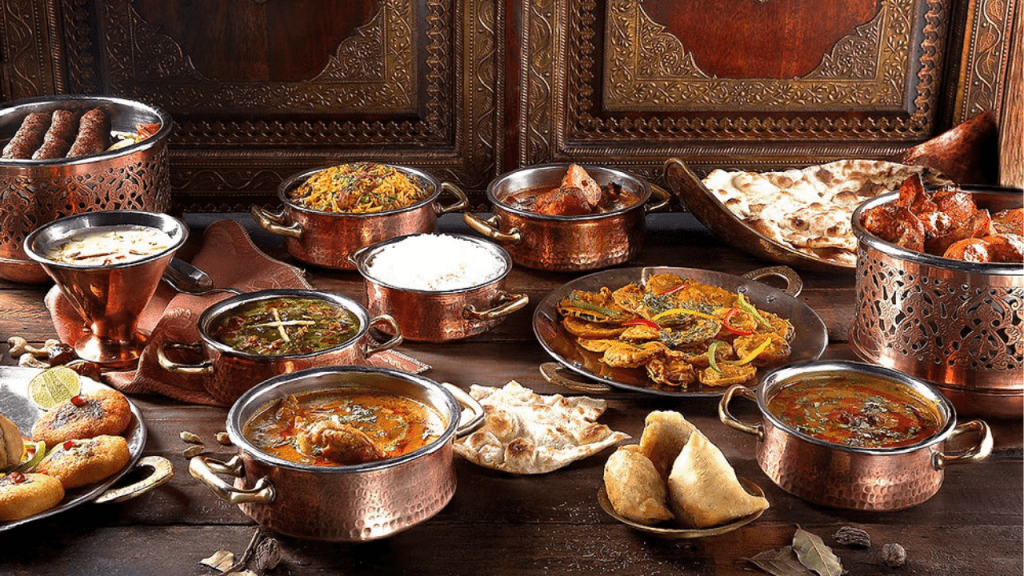If you’ve ever tasted a soul-warming bowl of dal or the aromatic magic of chicken biryani, you already know that authentic Indian food is more than just a meal—it’s an experience. But what if you didn’t grow up in an Indian household or don’t have a nani (grandma) whispering secret spice ratios over your shoulder?
Don’t worry. With the right techniques, pantry staples, and a little patience, you can learn how to cook authentic Indian food at home—no Indian grandma required.
In this Article
1. Stock Your Spice Rack Like a Pro
Authentic Indian flavors come from layers of spices, not just heat. Start by collecting these essentials:
- Turmeric – earthy and golden
- Cumin seeds & ground cumin – smoky base flavor
- Coriander powder – citrusy and sweet
- Garam masala – warm blend of cinnamon, cloves, cardamom & more
- Mustard seeds – for South Indian tempering
- Asafoetida (hing) – used in dals for umami
- Chili powder – adjust heat to your comfort
- Fenugreek (methi) – optional but very authentic
📝 Tip: Store spices in airtight containers away from light. Fresh ground spices offer the best flavor.
Check Out: Traditional Indian Food vs Modern Fusion: The Ultimate Battle for Health and Flavor
2. Master the “Tadka” Technique
Tadka (also called tempering) is the heartbeat of Indian cooking. Here’s how to do it:
- Heat ghee or oil in a pan.
- Add whole spices like cumin seeds, mustard seeds, or curry leaves.
- Let them sizzle and crackle—it releases essential oils.
- Add aromatics like garlic, ginger, onions, or tomatoes.
This sizzling mix of spices is often poured over dals, curries, or even vegetables to transform them.
3. Learn These Core Recipes First
Start simple. These dishes are beginner-friendly and form the base of many Indian meals:
a. Dal Tadka (Spiced Lentils)
- Boil yellow or red lentils.
- Prepare a tadka with garlic, cumin, and chili in ghee.
- Pour over dal, garnish with cilantro.
Why it works: It’s healthy, protein-packed, and deeply flavorful with minimal effort.
b. Jeera Rice (Cumin Rice)
- Fry cumin seeds in ghee, add soaked basmati rice and water.
- Cook until fluffy.
Why it works: Simple, aromatic, and the perfect companion to any curry.
c. Chicken Curry
- Marinate chicken with yogurt and spices.
- Cook onions, tomatoes, garlic, and ginger till soft.
- Add chicken, simmer till cooked.
Why it works: A classic dish that never fails to impress.
d. Aloo Gobi (Potato & Cauliflower)
- Fry cumin, turmeric, and ginger.
- Add chopped potatoes and cauliflower, cook till tender.
- Sprinkle garam masala before serving.
Why it works: A vegetarian favorite that showcases spice layering.
4. Use Ghee Generously (But Wisely)
Ghee isn’t just butter—it’s clarified and rich in nutty flavor. Use it in:
- Tadka for dals
- Brushing on rotis
- Cooking biryani or khichdi
Don’t overdo it. A spoon or two goes a long way.
5. Fresh Herbs Make All the Difference
Cilantro (dhaniya) is used liberally in Indian cooking—freshly chopped leaves add a burst of flavor at the end.
Also try:
- Mint in chutneys
- Kasuri methi (dried fenugreek) for finishing creamy curries
6. Invest in a Pressure Cooker or Instant Pot
Indian kitchens swear by the pressure cooker. It cuts cooking time for dals, beans, and even meat by half. If you have an Instant Pot, it works just as well.
Check Out: Vegan Indian Food: 10 Delicious Dishes You Didn’t Know Were Plant-Based
7. Make Your Own Masala Pastes
Forget store-bought curry sauces. Instead:
- Blend onions, garlic, ginger, and tomatoes.
- Sauté till oil separates.
- Add spices and you’ve got a versatile base for countless dishes.
8. Pairing & Presentation
Indian meals are usually served with:
- Roti or Naan – to scoop up curries
- Rice – plain or spiced
- Raita – yogurt with cucumber or spices to cool down the palate
- Pickles & Papad – for crunch and tang
Serve it all on a thali (plate) for the full experience.
Cooking authentic Indian food at home is about building confidence, understanding spice synergy, and embracing experimentation. You don’t need a centuries-old family recipe or a grandmother in the kitchen—you just need a love for flavor and a willingness to learn.
So roll up your sleeves, heat that pan, and get ready to make magic—with or without an Indian grandma.

